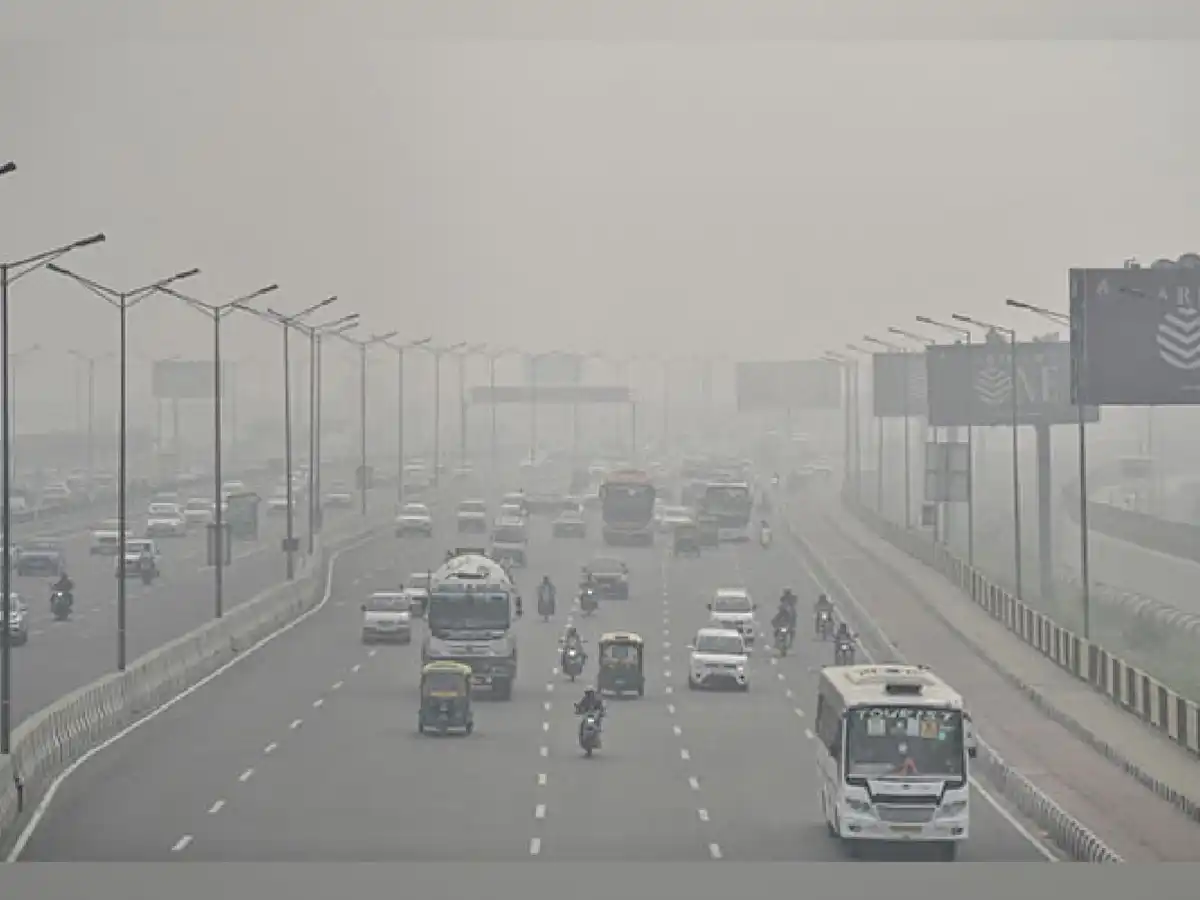Pollution levels were observed to be on the rise post-Diwali in various regions of the nation, including the capital city Delhi. Additionally, the arrival of winter and the cold, thick air enveloping the city, along with dust on the roads and pollution from vehicles and stubble burning incidents, also contribute to the deterioration of air quality annually during this time. This year, the air pollution levels both before and after Diwali have been more severe compared to the past two years.
In Delhi, on Sunday, two days post Diwali, the air quality index has exceeded 500. The air pollution in the capital had reached the ‘hazardous’ category by 5 am. What is detrimental to the well-being of residents in Delhi and its outskirts. The capital experienced a peak in PM 2.5 levels by midnight of Diwali this year, marking a 13 percent increase compared to levels recorded on the same day in both the previous year and 2022.
Delhi recorded an AQI of 316 on Saturday. This harmful air poses a serious threat to individuals with a weakened immune system. Ghaziabad had an AQI of 330, Ludhiana had a reading of 339, and Amritsar recorded a value of 368. Stubble burning has the biggest impact on these regions. Chandigarh’s AQI was 277, Jind’s was 337, and Sri Ganganagar’s was 333.
A recent report from the Centre for Science and Environment (CSE) found elevated levels of nitrogen dioxide (NO2) on Diwali, suggesting increased traffic. The report states that, contrary to previous years, there was a sudden rise in PM 2.5 levels in Delhi on Diwali night, followed by a decrease the following day.
The report stated that PM 2.5 levels peaked at 603 grams per cubic metre by midnight on October 31, exceeding Diwali night levels from 2022 and 2023 by 13 percent. At the same time, as per the Delhi Pollution Control Committee (DPCC) report, there has been a four percent reduction in PM 2.5 levels compared to last year’s Diwali.
PMA 2.5 are minuscule particles that are inhaled into the body and pose a threat to one’s health. As per the CSE report, the PMA 2.5 level showed a steady rise in the five days leading up to Diwali, with a 46 percent increase observed from October 28 to October 31.
PM2.5 are minuscule particles that are inhaled into the body and pose a health risk. The CSE report showed a steady rise in PM2.5 levels in the five days leading up to Diwali, with a 46 percent increase from October 28 to October 31.
The level of PMA 2.5 was reportedly 34 percent higher during the 12 hours of Diwali night in 2024 than during Diwali night in October 2022. The report stated that the level of PMA 2.5 this year was over twice the average pollution seen in the seven nights leading up to Diwali.
It was reported that PM2.5 pollution levels spiked during the night on Diwali this year and dropped significantly the following day. The high wind speed and hot atmospheric conditions in the city were cited as the causes of the delayed start and early finish of pollution on Diwali day, according to the report.
As per pollution department data, industrial areas in the state had AQI levels ranging from moderate to very poor, with Baddi having the highest pollution level at 392 AQI. Parwanoo had an AQI of 217, Paonta Sahib had 145, Barotiwala had 139, Nalagarh had 128, and Una had 122.
Shimla’s air quality stayed at a satisfactory level, with the AQI being 66 this year, compared to 78 last year. The local authorities allowed firecrackers to be lit only from 8 pm to 10 pm. Authorities stated that while a few infractions were noted, the majority of individuals complied with the regulations. At the same time, the air quality index (AQI) in Dharamsala dropped from 140 to 109 compared to the previous year. Nonetheless, there was a rise in air pollution in Manali, with the AQI increasing from 55 in 2023 to 80 in 2024 on Diwali day.

